There are lots of decisions to make when designing drapery panels. You have to choose the fabric, the trim, and the hardware. You have to decide if you want the drapery panels to be stationary or operable. Not only that, but you have to think about what kind of drapery lining your client will need, and where and how to mount that hardware. Even with all those decisions to make, do you know what’s missing?
Drapery pleat styles! Often overlooked is the important decision of the pleat style.
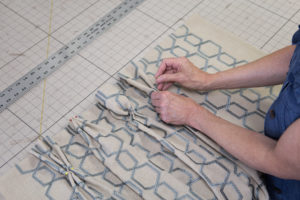
Why have drapery pleats? Drapery pleats add fullness to the panel to make it lush – you don’t want your draperies to look like a flat sheet. They also add a design element to the panel.
When working with a custom drapery workroom it is best practice to have a picture of the drapery pleat styles you want. This is because the same pleat can be known by different names.
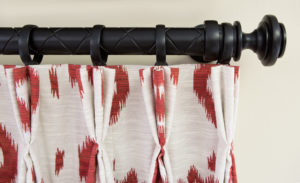
Three finger tacked at the bottom (AKA pinch pleat)
This is a traditional drapery pleat style. It’s made by dividing the pleat area into three equal folds and then tacking the folds at the bottom so that the top of the pleat slightly fans open. This pleat style can range in fullness from 2 times up to 3 times or even as high as 4 times fullness.
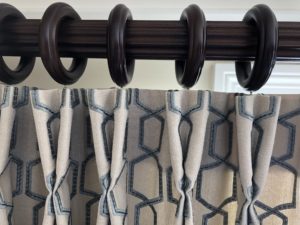
Two finger tacked at the bottom (AKA butterfly pleat)
This is a “cousin” to the pinch pleat, with the pleat area divided into two equal folds that are tacked at the bottom. It gets the name butterfly pleat because the top of the pleat opens up like the wings on a butterfly. It generally has less fullness than the traditional 3 finger pinch pleat.
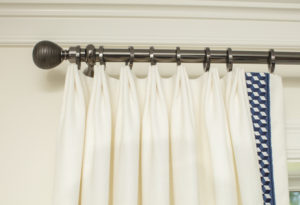
Three finger tacked at the top (AKA Euro pleat)
Like the pinch pleat, the pleat area is divided into three equal folds, but the pleat is tacked at the top. Some feel this gives a more updated look than the pinch pleat, while still controlling the fullness.
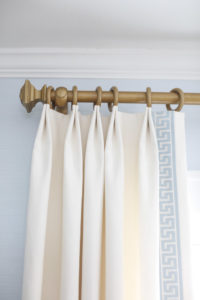
Two finger tacked at the top
This is the “cousin” to the Euro pleat with a sleeker two finger look and still tacked at the top. Again, the two finger version generally has less fullness than the three finger Euro.
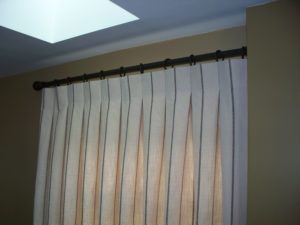
Inverted pleat closed 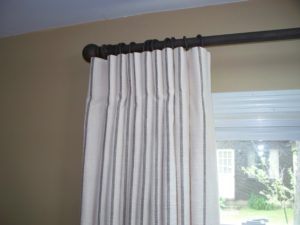
Inverted pleat open
Inverted Pleat
An inverted pleat offers fullness like the Pinch pleat or Euro pleat but the difference is that the pleat is sewn to the back of the panel rather than the front of the panel. This gives the front of the panel a clean, contemporary look. Inverted pleats are better suited for stationary panels than for operable panels because the pleat on the back of the panel affects how tightly the panel can stack when open.
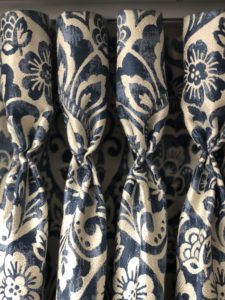
Goblet Pleat
The Goblet pleat is a more formal or decorative pleat option. The pleat is made with three fingers and is tacked at the bottom. The difference is that the pleat is then opened up and shaped like the flute of a champagne goblet. A piece of foam is inserted inside the goblet pleat to hold its shape. Like the inverted pleat, the Goblet pleat is better suited for stationary panels because of the larger stack-back when an operable panel is open.
Alternatives to Drapery Pleats
There are several panel styles that are not pleated that are worth including in this discussion – unpleated panels, grommet panels, and ripplefold panels. These panels offer a more contemporary look to drapery panels.
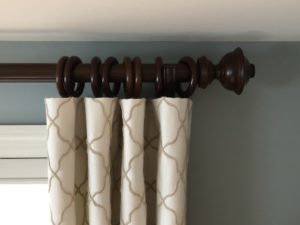
Unpleated Drapery Panels
Unpleated panels are just like they sound – flat. We put channels in the header for drapery pins and dress the panels so that they have “columns of fabric”. Notice that there are two rings for each column. Unpleated panels are almost always stationary panels because if you pull the panel closed, it will just flatten out and not hold any of the fullness in the columns.
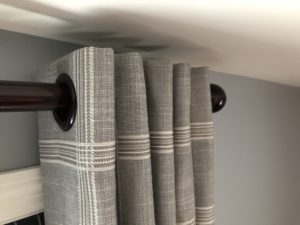
Grommet Panels
Like unpleated panels, grommet panels are flat and have “columns of fabric” when hung. Instead of two rings per column, there are two grommets for each column. Another difference is that the top of the grommet panel is above the rod, not below the rod. Like unpleated panels, grommet panels are almost always stationary because they too flatten out if the panel is pulled closed.
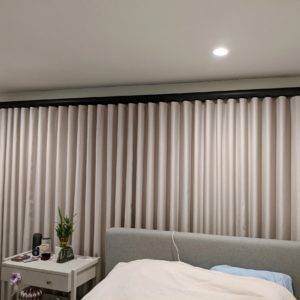
Ripplefold Drapery Panels
A third option for panels with an undulating header is ripplefold panels. Ripplefold panels require special hardware with spaced carriers. Snap tape is sewn to the back side of the panel at the header. The panel is snapped into the carriers and dressed in “columns of fabric”.
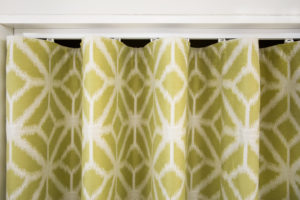
The carriers in ripplefold hardware come in four fullness options (60%, 80%, 100% and 120%). As a comparison, the 100% fullness option for ripplefold is equivalent to 2 times fullness for pleated panels. Ripplefold panels can be used for both stationary panels and operable panels but they are made for traversing. When ripplefold panels are closed, the spaced carriers pull the panel along, maintaining the fullness.
Parkway Window Works Can Help you Choose Drapery Pleat Styles
Parkway Window Works partners with busy interior designers to take their window treatment vision from concept to reality. We are here to help you work through all the technical questions related to your drapery project down to the last detail, including what drapery pleat styles to use. Ready to specify custom drapery for your next project? Contact us to get started.


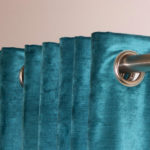
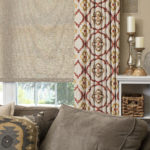
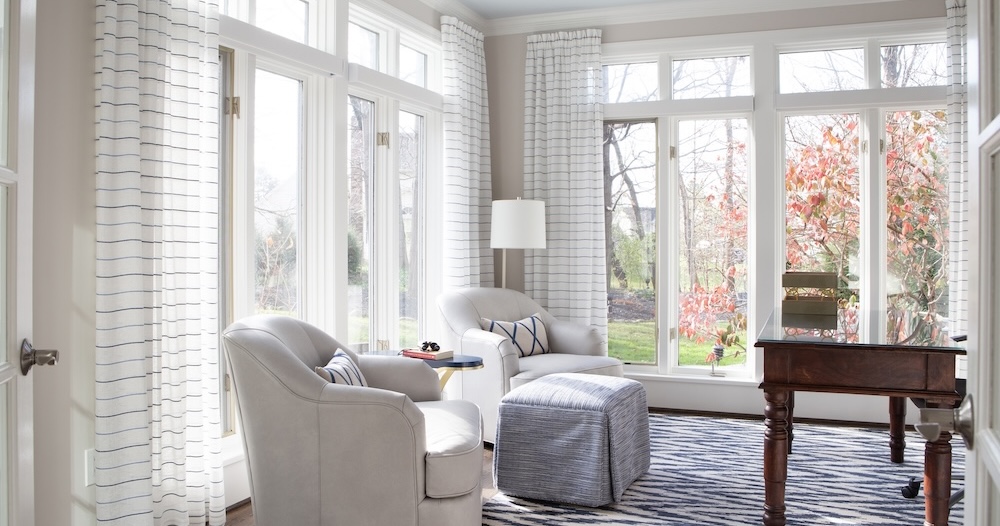
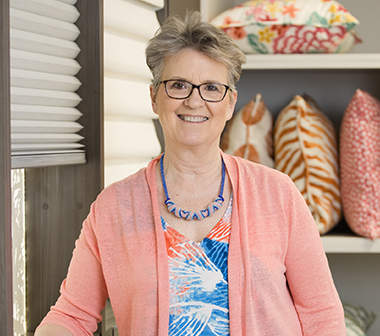
Elina Brooks
| 17 June 2023I have decided to get pinch pleat curtains for my living room after installing an air conditioner there to ensure we maintain a good indoor temperature by blocking out the sunlight from outside coming from the windows. It was interesting to learn that pinch pleats can vary in fullness since there are styles that can go as high as 4 times fullness. I’ll keep this information in mind while I look for services I can contact for my pinch pleat curtains soon.
Peggy
| 17 June 2023I’m glad you found the information useful. Best of luck with your pinch pleat project!